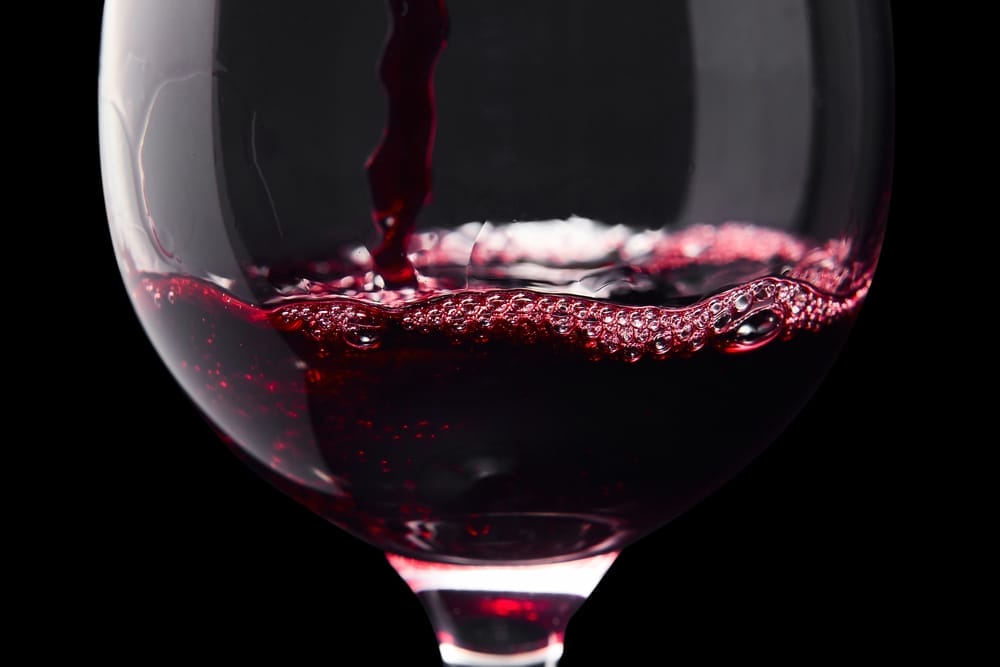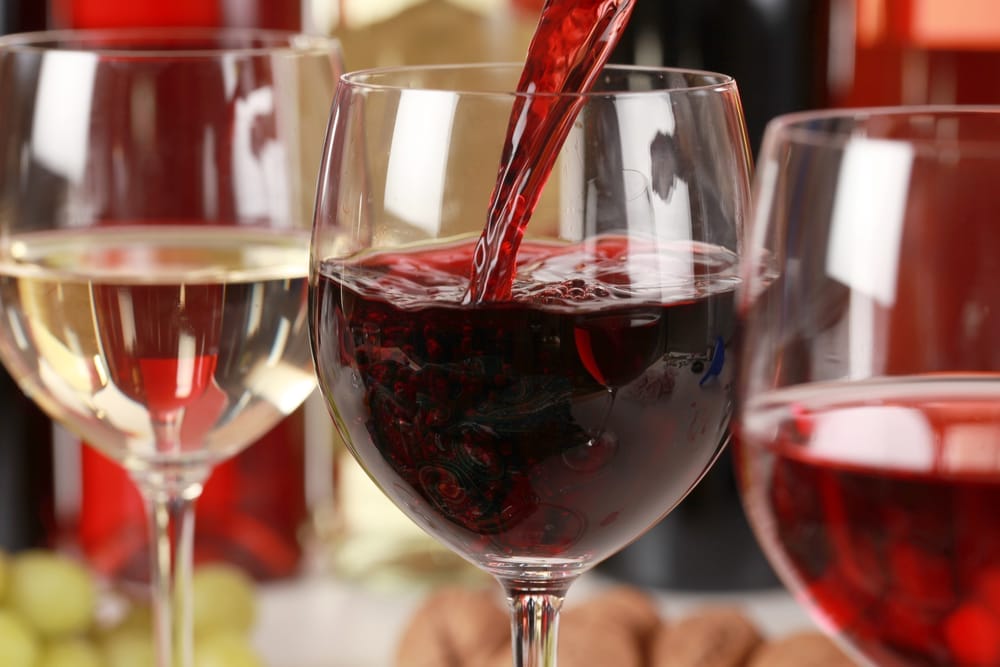Searching for your new favorite sweet wine?
Moscato and Roscato are likely names that have come up! It can be tricky to tell the difference between these two wines, especially as the names are so similar.
Luckily, we’ll give you everything you need to know to distinguish and choose between the two in this article, including:
- An overview of Moscato and Roscato
- A comparison between the two wines
- Occasions to have Moscato or Roscato
- Making the choice between Moscato or Roscato
Plus tips, FAQs, and more, let’s pop and pour!

Moscato Wine: An Overview
Moscato is a wine made from Muscat grapes. There are many theories on the origins of the Muscat grape, and while none can be proven thoroughly, it’s certain the grape strain is very old!
One leading view is that the grapes originated in Egypt and were eventually brought to Europe through trade of immigration.
While Moscato can refer to many different types of wine, it generally means a sweet, Italian style wine made from Muscat grapes.
It is sweet, perfumed, and a lighter wine – generally white or rose. There are five main varieties of moscato:
- Sparkling (or semi-sparkling) moscato is carbonated, a little drier than most but still sweet. It has a strong fragrance and balanced acidity.
- Muscato Blanc or white moscato, which is generally the most dry and tart
- Pink Moscato is a blend of white moscato and a little Merlot, and tastes of berries, other fruit, and sugar.
- Red Moscato is the least common type and is made from Black Muscat grapes giving it a more multilayered, complex flavor.
- Finally, Dessert Moscato is even sweeter than the other varieties, and is made using extra aged and slightly dried grapes.
Roscato Wine: An Overview
Roscato isn’t actually a single variety of wine – it’s a brand!
Roscato is wine using Italian grapes, marketed to be a sweet wine popular in the United States.
It originated in 2009 by Palm Bay International, in a (successful) attempt to market a single sweet wine variety nationally, out-competing regional offerings.
There are many different types of Roscato on the market, though as a rule they’re mild, fruity, and sweet.
Their brand splits categorizes their offering by four different subtypes:
- Sweet and Chill (Rosso Dolce, Moscato, Gold, Rose Dolce, and Bianco Dolce)
- Bright and Fruity (Peach, Tropical, Blueberry, and Black Cherry)
- Bold and Sultry (Smooth and Dark), and
- Fun and Bubbly (Sweet Red and Moscato).
Comparing Moscato and Roscato

Since there are so many types of each wine, it can be difficult to make a direct comparison.
In general, both wines are sweet and light! Moscato tends to be slightly more subtle and complex in flavor and sits around five to six percent ABV, while Roscato has more bold, sugary flavors, and is around seven percent ABV.
Flavor Profile Comparison
A typical Moscato has natural sweet flavors like honeysuckle, peach, orange, pear, and meyer lemon.
The occasional bottle also has tropical notes of pineapple, mango, and toasted coconut.
On the nose, these wines tend to be reminiscent of orange blossom and linalool (a floral medley found in many alcohols and plants). These scents are mellow and relaxing.
Roscato is a laid-back wine. It’s bright and sweet, with little to no tannins, bite, or dryness.
The flavor palette varies between types of course, but you can expect a smooth, sweet, fruity wine that’s very easy to drink!
This versatility also makes Roscato an excellent (and cheap) choice for making cocktails and spritzes.
Food Pairing and Serving Suggestions
Moscato goes excellently with lighter meat dishes, including chicken, white fish, pork, crabs, and shrimp.
Try serving a Moscato with a fresh and flavorful dish such as tacos, shrimp cocktail, barbecue, or Thai food!
If you’re after a cheese pairing, stick to the middle of the range, semi-salty cheeses such as cheddar (not overly aged), gouda, or manchego.
Most Moscatos go great with sweet foods, but dessert Moscato is of course the best suited. Try it with strawberry shortcakes, blueberry muffins, or a light and fluffy mousse.
Roscato Wines actually have official food pairings for each bottle! Their recommendations are as follows:
- Rosso Dolce – Hot wings or fudgy brownies
- Moscato (Still) – Spicy Thai noodles or warm apple pie
- Gold – Hot sauce or homemade lasagna
- Rose Dolce – Loaded mac and cheese or sprinkle cupcakes
- Bianco Dolce – Fish tacos or pasta with spicy red sauce
- Peach – Buffalo wings or brunch fare
- Tropical – Fruit salad or shrimp cocktail
- Blueberry – Pulled pork or New York cheesecake
- Black Cherry – Pad Thai or a rack of ribs
- Smooth – Baby back ribs or red velvet cupcakes
- Dark – Porterhouse steak or chocolate lava cake
- Sweet Red – Chocolate covered strawberries or birthday cake
- Moscato (Sparkling) – Cannolis or strawberry cheesecake.
Occasions and Preferences
Generally, these light sweet wines have a lot of crossover when it comes to occasions to serve them!
Sweet whites and roses are excellent with brunch, either by the poolside or beach or as an afternoon treat.
Sparkling wines are always well suited for special occasions like birthday parties, graduations, New Year’s Eve, and any other celebration.
Sweet reds are inherently romantic and great for a date night when you want the wine to flow but the night is still young. Both Moscato and Rosato are popular and reliable picks for a girls’ night (in or out) as well!
Choosing Between Moscato and Roscato

Moscato is a great option for a light and sweet wine that is still complex with subtle notes.
Roscato, while still delicious, is a less intricate wine and has less mature and more bold, fun flavorings.
This means that it might be more appropriate for a younger or more laid-back crowd, while Moscato comes off as slightly more sophisticated.
If you enjoy a wine that’s subtly sweet, with floral notes and a slightly dry aftertaste, Moscato is a great option!
It’s a soft yet elegant beverage that’s perfect for a garden party, brunch, or lunch.
If you prefer sugary, fruity flavors, then opt for a Roscato! This is especially true if you’re looking for a flavored wine (like Blueberry, Blackberry, Dark Cherry, Peach, or Tropical).
They also have the number one sweet red wine in the United States, so if you’re after a sweet red look no further. Roscato is ideal for wine novices (or those who just aren’t the biggest fans of wine), and if you’re looking to party!
In most other regards, the wines are pretty comparable.
They both range between 100 and 170 calories a glass depending on the type (generally, sweeter equals higher calorie count), they’re both light in alcohol compared to most wines, and they’re both great options for those who might not like the taste of drier or more sour wines.
Final Words
Moscato and Roscato might seem like pretty similar wines – and to some extent, that’s because they are!
They’re both sweet, low-percentage wines that come in a range of different flavors.
These wines are perfect for brunching and other daytime drinks, girls’ nights, and special occasions.
While the Moscato is a little softer and more complex and the Roscato is more bold and fruity, both of these wines have their place at a party, dinner table, or whenever you’re after a treat!
Also Read: Moscato vs. Chardonnay: 10 Key Differences
FAQs
Yes! Both Moscato and Roscato are great options for dessert wines, as they’re light and sweet. Make sure to keep the flavor profile of the dessert you intend to serve in mind when choosing which bottle to buy.
Both Moscato and Roscato are great choices for beginners. They’re not too strong, fruity, and sweet. Shop around and find the type you enjoy the most.
Popular brands of Moscato include:
– Llano Estacado Red Moscato
– Innocent Bystander Moscato Sparkling
– SIP Moscato
– Robert Mondavi Winery Moscato d’Oro
– Bottega ‘Petalo Il Vino dell Amore Moscato’ Spumante Dolce Colli Euganei
– Yellow Tail Pink Moscato
– Muscador Cepage Muscat Mousseux Rosé.
Roscato is actually the name of the brand, so the most popular brand of Roscato is… Roscato!
- Moscato vs Roscato: A Comprehensive Comparison of Sweet Wines - December 15, 2023
- Should White Wine Be Chilled? Expert Insights on Serving Temperature - December 14, 2023
- Moscato vs Riesling: A Sweet Wine Showdown - December 8, 2023


![Moscato vs. Chardonnay: 10 Key Differences [2023] Moscato vs Chardonnay](https://e25kn4v6x6d.exactdn.com/wp-content/uploads/2023/09/Moscato-vs-Chardonnay.jpg?strip=all&lossy=1&resize=150%2C150&ssl=1)







